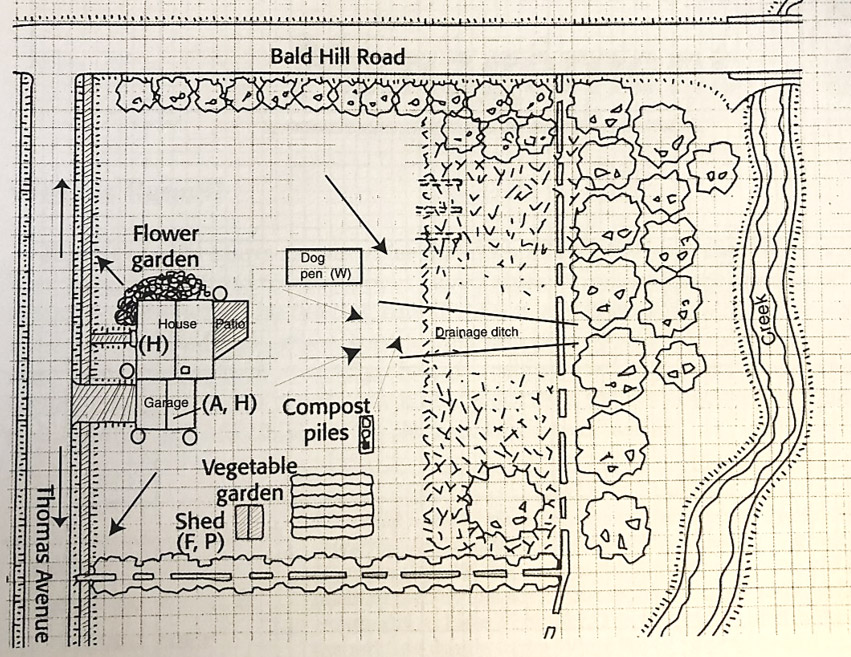Dealing with Drainage Issues
Step 1. Determine the Current Stormwater Conditions on Your Urban Property: Perform an “Umbrella Survey”
Use a sheet of paper to perform an “umbrella survey” of your property. This means going out during a rain event to see where the water is going and creating a map of where water flows on your property with potential stormwater pollutants.
Things to consider putting on your map:
- Buildings, patios, sidewalks, driveways, and other impervious surfaces that do not
allow water so soak in. Are there dog runs, exposed bedrock, or non-paved drive areas
that have created hard pans that do not allow water to soak in?
- Trees, gardens, compost piles and other softscapes.
- Terraces, berms, or swales that may redirect stormwater flow. Drainage ditches or
storm drain infrastructure made to move stormwater. Where is your nearest storm drain
inlet, even if off your property? Where does your water flow as it leaves your property?
- Where is the water flowing? Where is it coming from? Does it flow onto your property
from somewhere else? Mark areas that are prone to flooding,
- Look for any lawn or home chemicals or materials that are stored outside that may be washed into stormwater.
Example Map
What's next?
Once you've determine the current conditions and your problem areas, it's time to look at solutions!.
